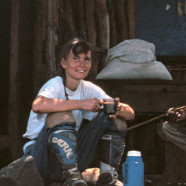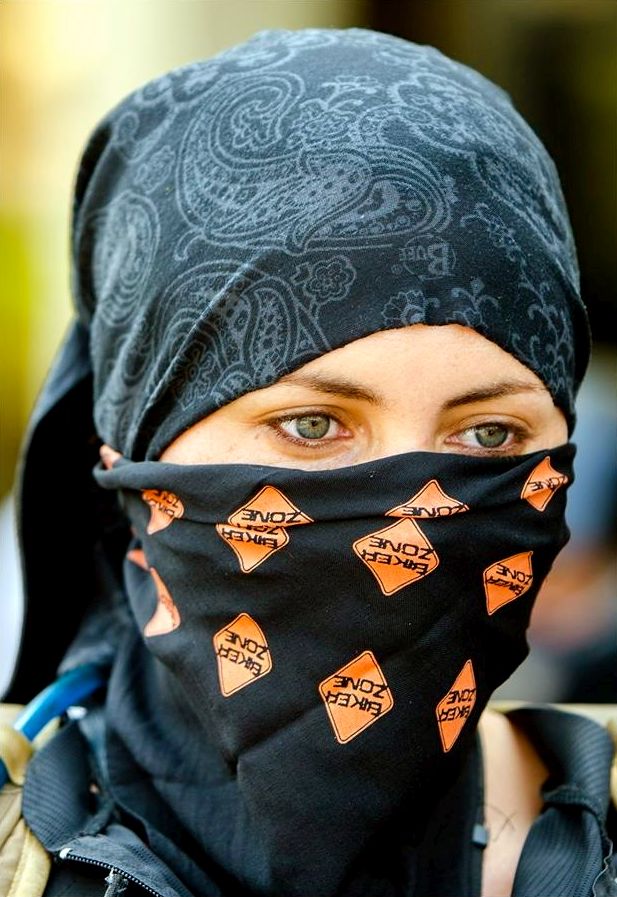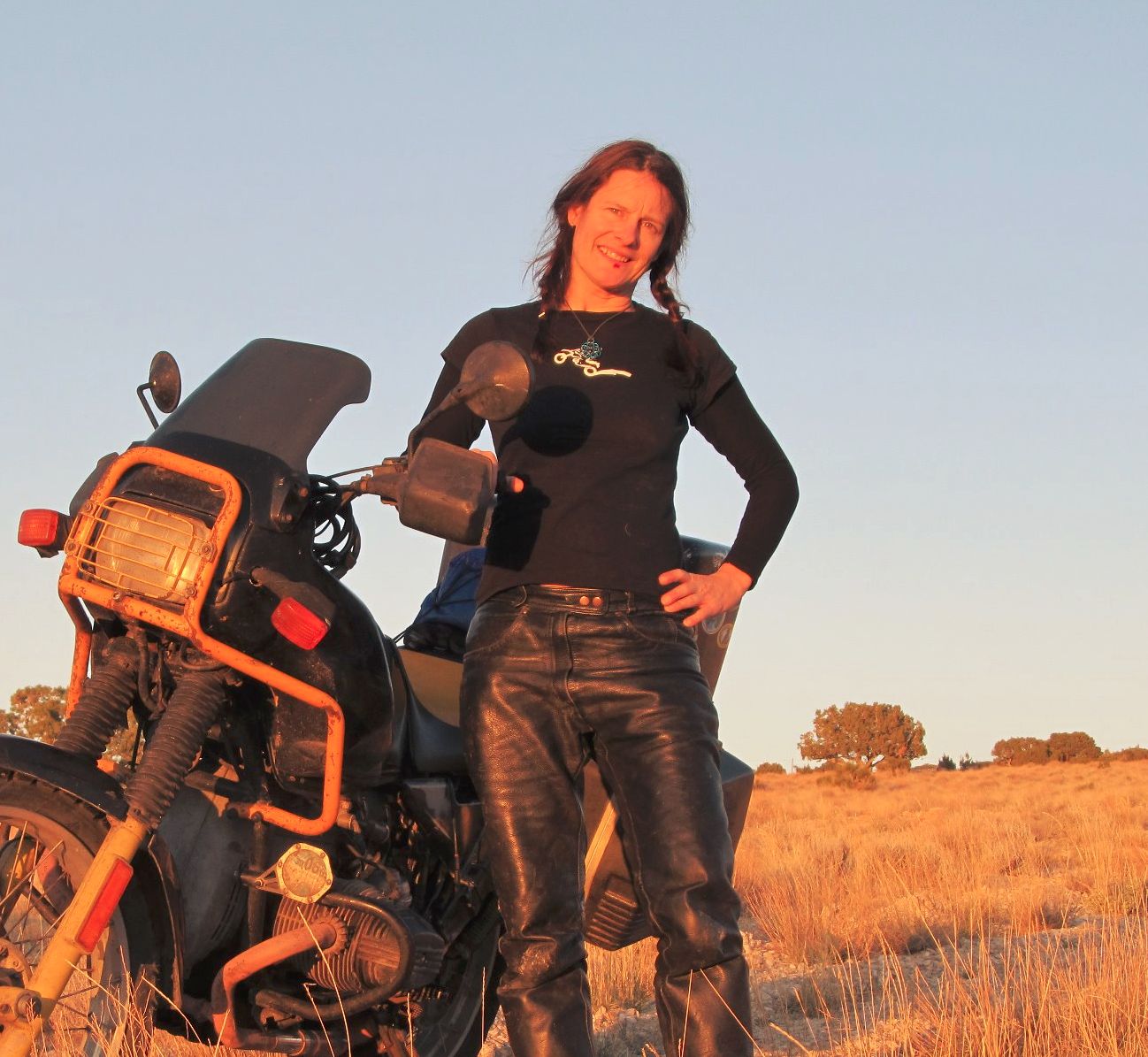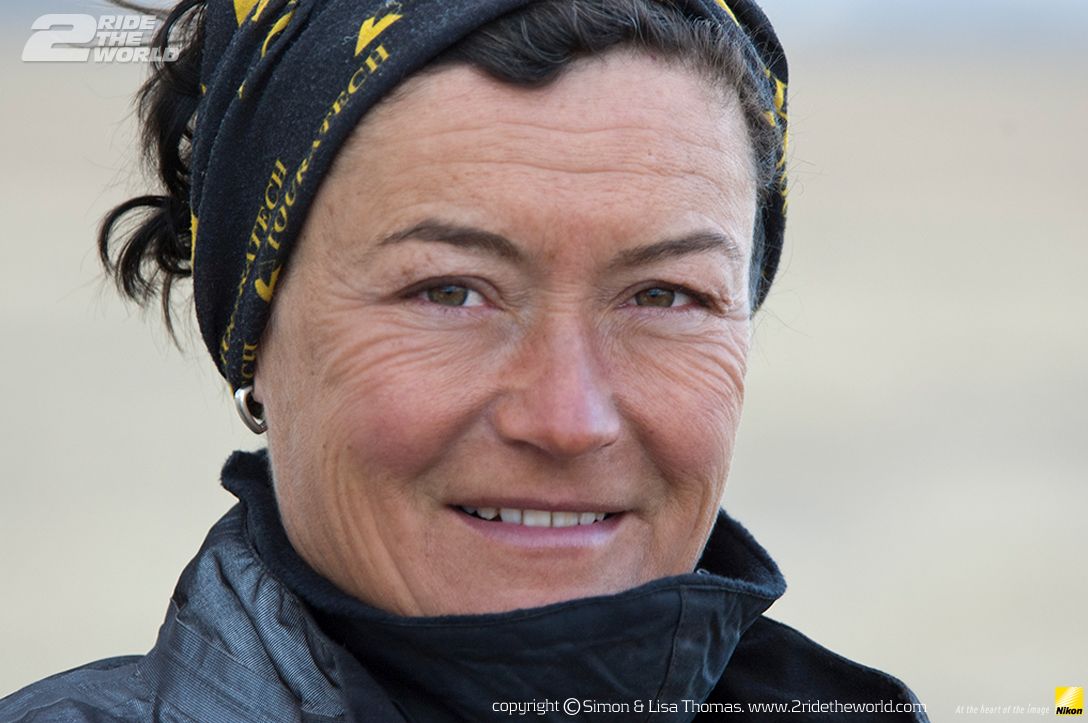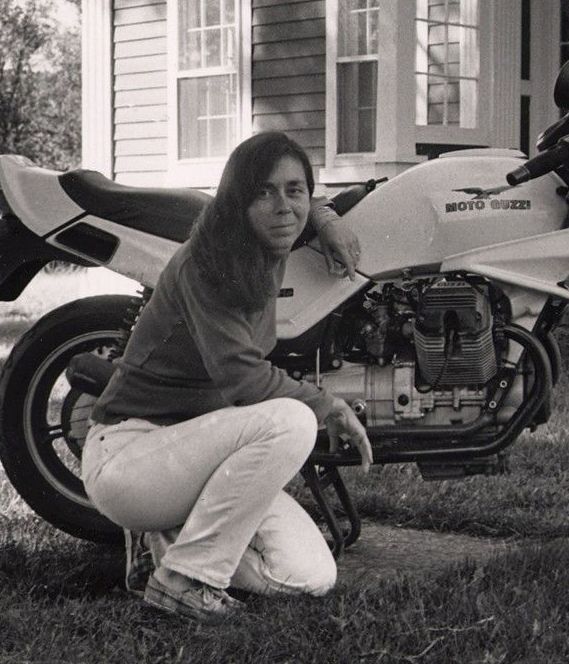Doris Wiedemann
German motorcycling legend Doris Wiedemann has ridden in eclectic places like North Korea and China, in addition to most of Europe and the North American, African and Australian continents. She achieved cult motorcyclist status in her ride across Alaska in the winter on a motorcycle with studded tires to handle the ice, snow and blizzards. Doris talks to Global Women Who Ride about her rides, her inspiration, and her inspiring legacy. [Rashmi Tambe, Editor]
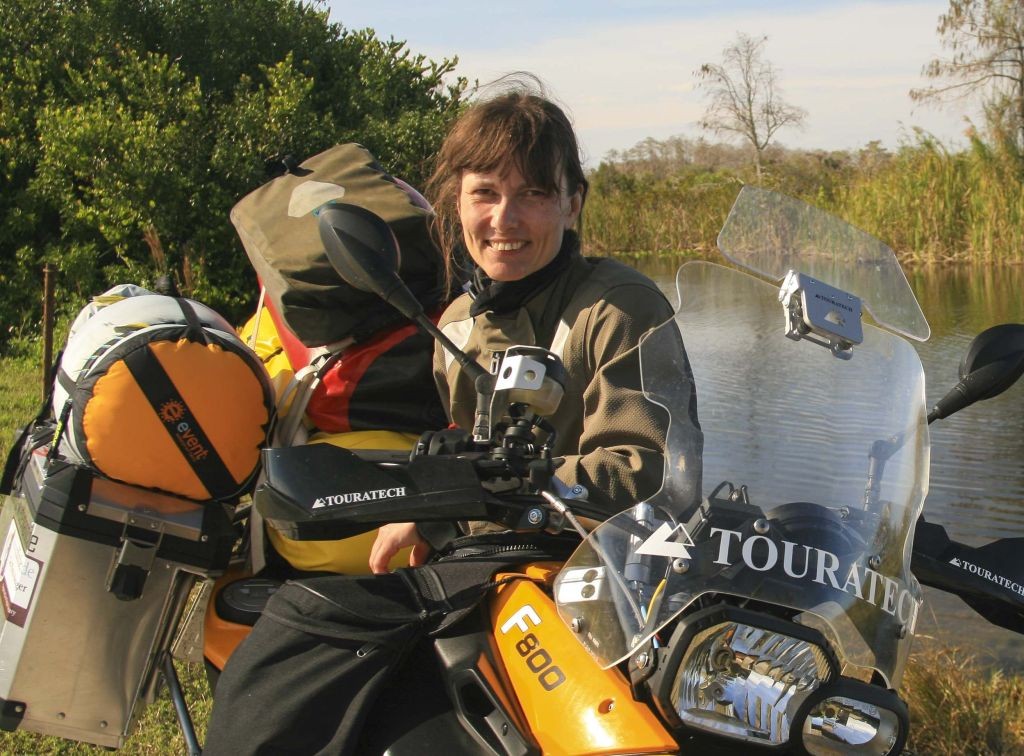
Please introduce yourself. I am from Bavaria. I was born in Munich but raised in the country. I am a trained tax accountant and have a Masters in Economics. I worked many different jobs to finance my dreams and now work as a freelance journalist and PR consultant. I do not travel for a living but I’ve written three books in German about my travels.
How did you get started with motorcycling? My motorcycle history began at the age of sixteen on the passenger seat of my boyfriend’s motorcycle. When I turned eighteen, I got my own driver’s license despite my boyfriend saying that it would be too dangerous. When I fell in love with a Kawasaki Z650 he told me I could not ride it because I would not be able to pick it up in case I drop it. I was stubborn and bought the Kawasaki anyway. We did several trips together in Europe before we split up two years later and I continued my life on two wheels by myself.
I flew to the USA in 1990, bought a Honda Shadow 700 and traveled for five months on it. I saw the Grand Canyon and I was at Sturgis Bike Week’s fiftieth anniversary. It was too expensive to take her back to Germany with me where I would not have any real use for her. Mind you, it was not the best of travel bikes with its limited luggage capacity and road clearance.
You went on from there to be a solo world traveler. Yes, the trip infected me with the travel bug and I did not want to have to sell the bike afterwards again. So I worked, saved enough money, and bought a used BMW R100 GS PD. I took an off-road riding course and did a six week solo trip to Scandinavia on it. I added a big 42 litre petrol tank, self made aluminium boxes and an Öhlins suspension and shipped her to Australia, where we explored the whole continent for six months. Next I crossed Africa from north to south along the East Coast and ended up in Cape Town, South Africa, after seven months.
After this, I turned east. The guy who owned my bike before me had moved to South Korea. When he heard about my trips he invited me for a coffee in his new home. This inspired me to ride all the way across Russia to Vladivostok. Using a new ferry line to South Korea I had to set the price for the bike because I was the first passenger taking a vehicle with me. I was also the first foreign traveler with her own motorcycle in the country, illegally at the time. I was also lucky to be able to attend an organized ride in North Korea, making me the first non-Korean woman traveling in North Korea on her own motorcycle. Next up, I took the ferry to Japan and met up with some Japanese travelers I had met in Africa.
The cheapest way to get back home to Germany was taking the same road I had come on, so I crossed Russia again. This time it was amidst the bright colors of autumn – what a breathtaking sight! – until it snowed on the Ural mountains. This was quite a challenge since I was not equipped for winter riding but the scenery was mind-blowing.
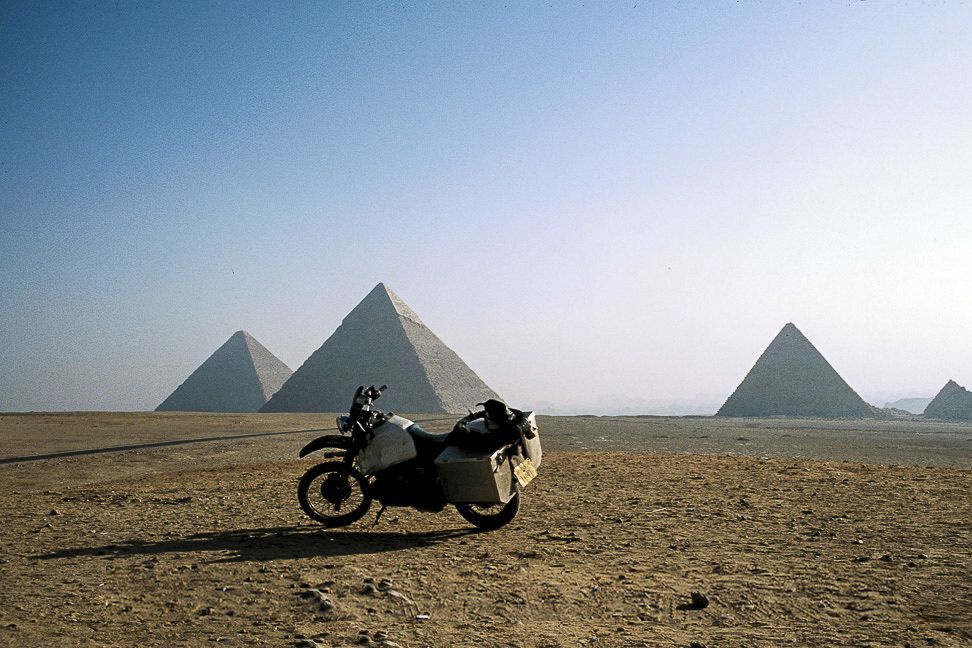
Doris Wiedemann in Egypt
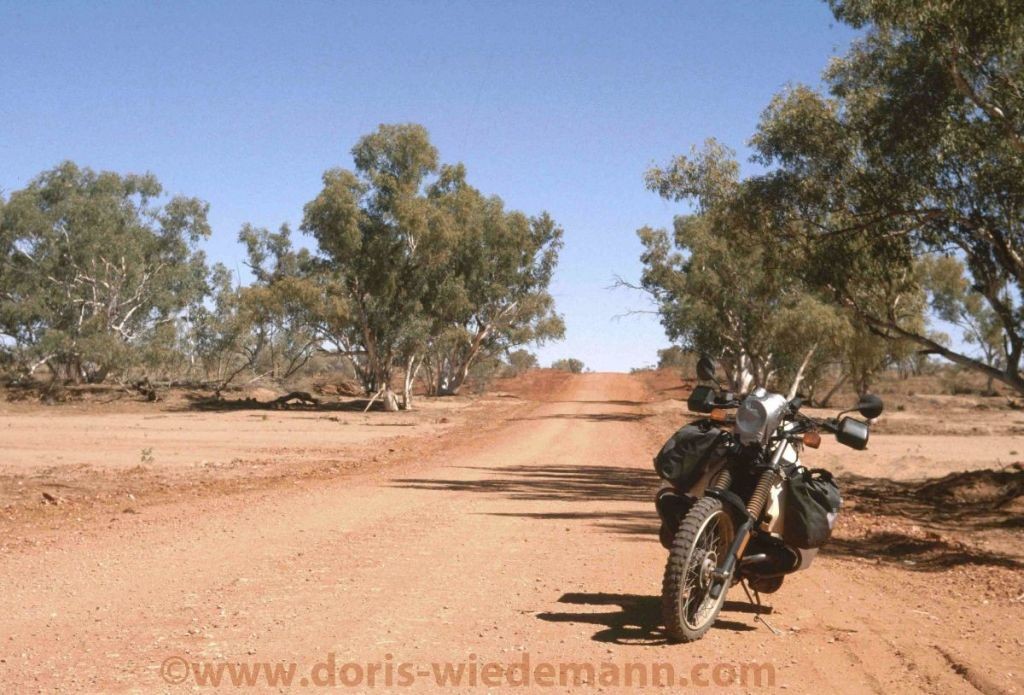
Crossing Australia
Next was China? How did that go? And did you get to hang out with Chinese motorcyclists along the way? A few years later I heard about a chance to get my bike into China, a country where you normally have to have a guide when you travel with your own vehicle. The drawback was that I would have to leave the country without my motorcycle. I bought a BMW F650 GS Dakar, crossed Poland, Ukraine, Kazakhstan and Mongolia to enter China. I rode there for five months on my own motorcycle without a guide – the first female traveler to do so. In the end, I was also able to take the bike out of the country again.
I remember my first days in China being a big surprise. I had been in countries where I didn’t know the language before. China was very different. It was a different culture and a different world, from my European point of view. In parts it had been difficult for me in Japan, and I expected China to be much more difficult, but it was not. Pupils in China learn English from grade one on and the young girls were very helpful. Older people also understood, talked to me in sign language, and helped me find my way, a place to stay or a place to eat. I got myself maps in Chinese so the locals could read the name of the city I was heading to and if somebody was illiterate or did not know the way, they would get me somebody else to help. Sometimes the motorcycle club that invited me to their city organized an interpreter if they had no English speaking members.
Some of my nicest experiences were a result of not sharing a similar language. Other times I was glad to meet an English speaker because it was very nice to be able to solve at least some of the mysteries of a foreign country by being able to talk to each other.
About Chinese motorcyclists – a very friendly young woman in Beijing put the word out about my trip on an internet platform. This way I met motorcyclists in all big cities, which was very helpful because you cannot go by bike into the province capitals and it is much harder to make contact in big cities where everybody is busy. This way I had actual motorcyclists who showed me their city and took me on excursions. I also met motorcyclists along the road. I was stopped twice because I rode a BMW and the men had never seen a real one in their life before. Other times they just said hello or offered help.
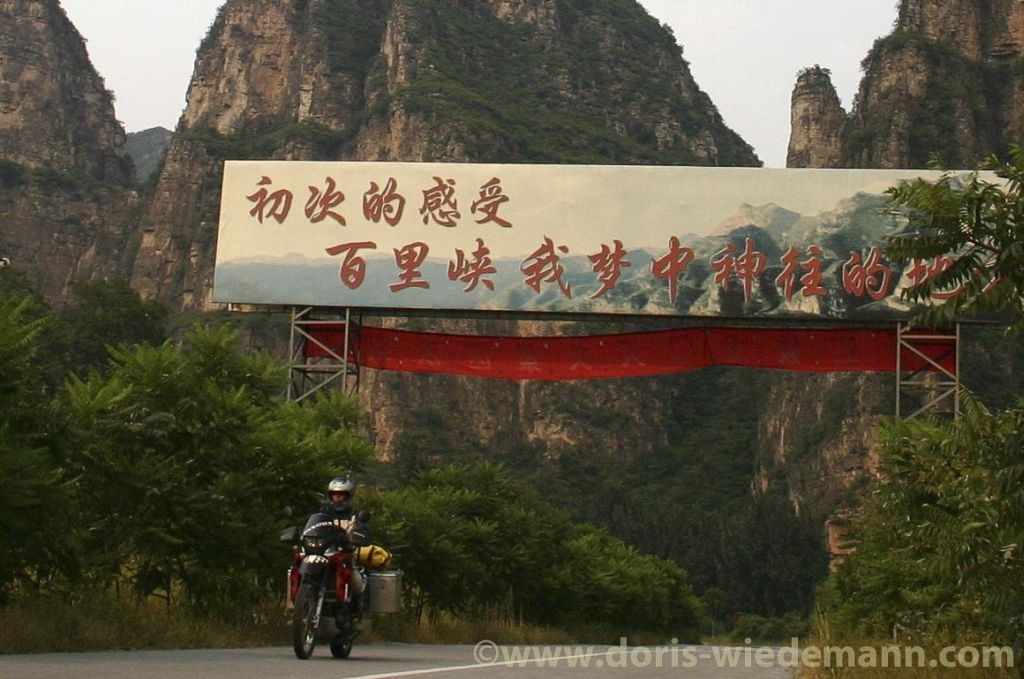
Doris Wiedemann rides solo across China
Your latest ride was through Alaska in the dead of winter. Definitely not for the faint of heart. I did that with a travel partner, Sjaak Lucassen. We rode from Key West, Florida – the southernmost point of the continental USA – to Deadhorse, Alaska – the northernmost point accessible on public roads. I did not want to take my own bikes on the salted winter roads and I worried about how the carburetor membrane would do at -40°F. Sjaak rode a Yamaha R1 and I did not feel like sauntering behind on my F650, so I asked BMW for help and they lent me an F800 GS for the trip. It was outfitted with a Hyperpro suspension, Pirelli tires at the front and Metzeler tires at the back, to have enough rubber for the Best Grip spikes we screwed in on our way to the wintry North. In the deadly cold of winter we rode through snow and ice to Prudhoe Bay in Alaska. We made it and I was said to be the first woman who traveled on the Dalton Highway on a motorcycle in winter.
Motorcycling in Canada and Alaska in the winter was cold and glorious! There was a lot of snow and the landscape was fantastic. Of course we had to stick to the road but since it was covered with ice I did not feel like an intruder as much as being part of it. Being on a motorcycle puts you much closer in touch with the environment than sitting in a car and we got a good understanding about what cold can do. In the mornings the rubber of our tires would be rock hard because of the cold. The plastic map cover of Sjaak’s tank bag cracked like glass because it was frozen. The air was so crispy clear that you could see it.
It was difficult. We had to be very careful and think ahead. One freezes to death rather quickly when it is really cold. Taking pictures on the road had to be done quickly. We had no car to re-warm our fingers when we got cold. We only had heated gloves while the bikes were running. One time Sjaak was not able to put them on by himself anymore because he had taken one picture too much and his fingers were too cold to move.
The biggest challenge was the Dalton Highway. The weather was good on our first day but an avalanche stopped us the next day, and a blizzard roared over the northern plains the following day. While attempting to reach Deadhorse on the third day, we got caught in the tail end of the blizzard. Luckily we met a very helpful truck driver who guided us to the Cruz Construction Camp where we were invited to stay overnight – many thanks to him and all the other truckers! I very much appreciate the job they do and am aware of the fact that we were in their way, but nevertheless they were very supportive. And of course many thanks to everybody else who helped us to reach our goal – the frozen Arctic Ocean.
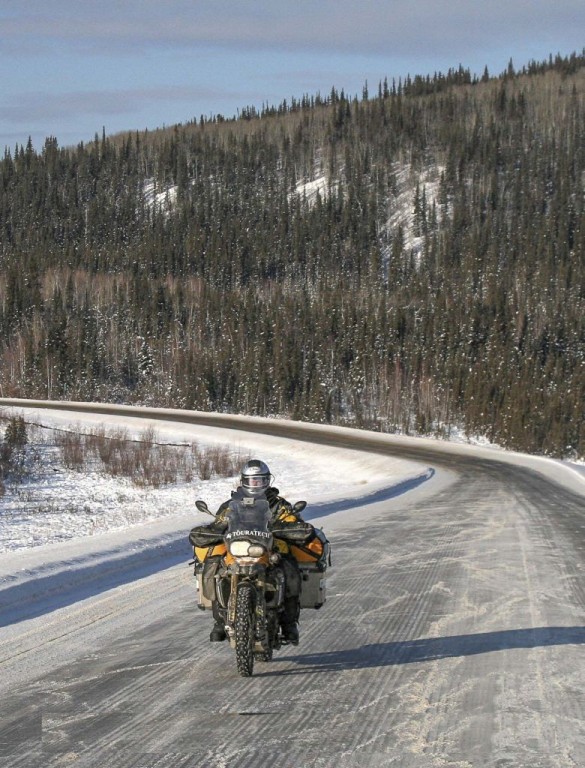
Doris Wiedemann rides across Alaska in the winter
https://www.youtube.com/watch?v=Cfv-_CWDRAU#t=97
Can you tell us a good story from your travels? Here’s one: While in Russia, I wanted to camp out in a birch tree forest and I accidentally drowned my bike in a mud hole. I thought I would have to stay there over night because it had gotten dark, but then I heard hoofs clattering. I ran out of the forest and met a farmer on his way home. His one horse power rescued my bike by pulling it out of the mud and with sign language he invited me to his home. Without knowing who I was, where I was from and where I wanted to go, they first gave me a much needed wash in their banya (sauna) and offered me clean clothes before sitting me at a table and feeding me. That was when I got a chance to explain – with the help of my little dictionary – that I was from Germany and planned to go to Vladivostok. It is a special kind of hospitality opening your home to a total stranger and I was very touched by this.
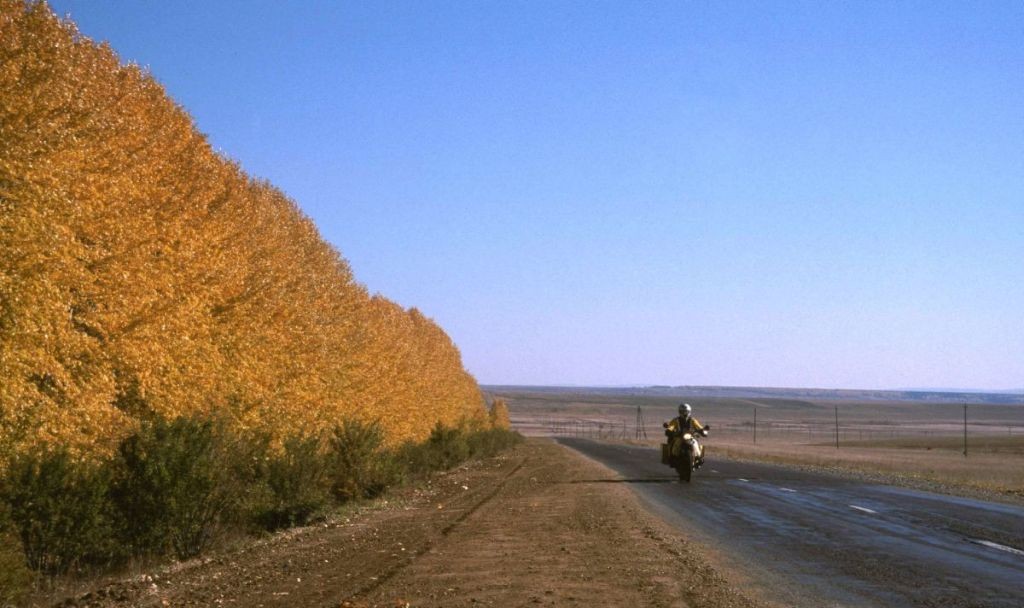
Doris Wiedemann rides across Russia
Do you prefer riding solo? Travelling by myself does have some disadvantages. There is no familiar person to talk to. There is nobody to share the luggage and organisational work, the joyful and the sad moments on the road. But to me the advantages count more. I mingle easily with foreign people and their unknown cultures. I find ways to communicate with people without sharing a common language. Most of my hosts find it easier to invite one person instead of two or more, out of social reasons as much as out of financial and room capacity. Being on my own I easily integrate into their households.
Did you ever wish you had a smaller bike out on the road? Of course, every time I am on difficult off-road terrain. Then again, the boxer engine really helps lift the bike. And I like the comfort of two cylinders for long distances. On smaller bikes you still have to carry the same luggage, which makes them heavy. So the only real concern for me would be fuel consumption.
Have you felt like you were in danger because you’re a woman? I have had occasional troubling moments but in general, no. Hospitality is highly valued in most countries of the world and this includes not harassing a single traveling woman. Besides, I guess many men think twice about approaching me after they see me arriving on my big motorcycle. (laughs)
If you could get into a time travel machine and ride a motorcycle at any time in the history of the Earth, where would you choose to go and ride and why? I am sure every time is interesting in its own way. For a woman to travel you always had to be and still have to be privileged. I am very privileged with my education and German nationality which makes it possible for me to earn enough money and easily get visas. As long as I would have these privileges in another time, I guess I would be good to go anywhere. In general I like to enjoy life where I am right now.
Is there any other kind of motorcycling that you’d like to try your hand at? I have been on the race track and tried hard enduros, and of course traveled many different roads. But I have never been on a trials bike. I would love to give this a try one day. Unfortunately there are so many things I want to do and since my time and money are limited, I have to prioritize.
If you could design your dream motorcycle, what would it look, sound and feel like? It would be light, have a good amount of power, be easy to maintain and repair, multi-purposed, have great handling, be comfortable riding on and off road, less polluting, inexpensive and of course good looking. In short: an immaculate eierlegende wollmilchsau as we say in good old Germany.
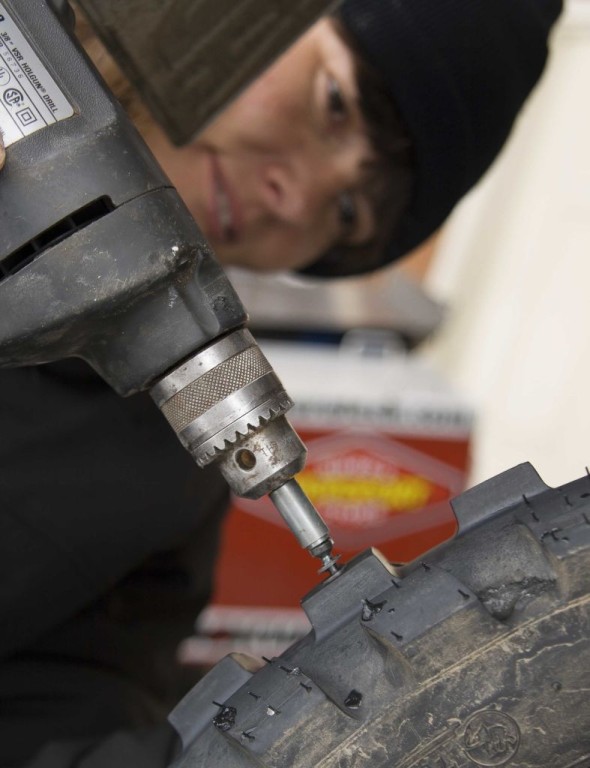
Doris Wiedemann drives studs into her tires for her winter ride across Alaska
What are you riding these days? I have two bikes, the BMW F650 GS Dakar I went to China on, and the BMW R100GS/PD I rode on most of my other trips. She is my Grand Old Lady, a convenient travel and everyday bike I know well. At the moment she is on display at the oldest and largest bike museum in Germany as part of a special travel bike exhibition called “Traveling Heros”. I got a loaner R1200 GS Adventure from BMW for the duration of the exhibition. It is a huge bike and it took me a while to get used to its weight when pushing her out of the garage or maneuvering around a parking lot. It’s fun to ride and has lots of power, wonderful handling and a lot of comfortable accessories, e.g. a cruise control which is very handy when riding on speed limited autobahns in countries where speeding tickets are very expensive. A few days ago, I tried to pick her up. This was the moment when we became friends: it was surprisingly easy, despite the 260 kg weight.
What’s the last enjoyable or inspiring book you read? It’s funny that you ask me that right now. A friend just recently reminded me of a book I had read some 25 years ago and I read it again – Robert M. Pirsig’s Zen and the Art of Motorcycle Maintenance.
To what or whom do you turn to when you need inspiration? Friends, books, music, exercise in nature or maybe mostly to myself. I like taking time off and spending it by myself. The German singer Ina Deter has put this wonderfully into words: “And if the world ends today, it has to end without me.”
If you could sum up what you have taken from your travels, what would that sound like? All over the world people are shaken up by anger and disappointment, fear and sorrow. There is also love and sympathy, joy and hospitality. Life on the rest of earth is as manifold and interesting as it is in the little Bavarian village where I live, only a little different. It’s the little joyful moments one encounters in everyday life which make life worth living – in Germany as much as in the whole world.
What kind of legacy do you hope to leave? Wow, I’ve never thought about this. I guess what I would love to see is that we all have an individual feeling of global responsibility. Respect is the magic word for me in this context. But this is not my legacy, this is what I think is the right thing to do and I try to live up to it as well as I can.
I would love to leave some traces of happiness in some people’s lives and love in some people’s hearts. Of course I am happy if I can be an inspiration to somebody to do something good with their lives. I do not know about a legacy. In terms of money I have never earned enough. Maybe wisdom? If someone stumbles upon what I have done, I hope that they can take a few things from it and make up their own mind about what they find useful from it for their own lives. ![]()
Follow Doris on her website.

